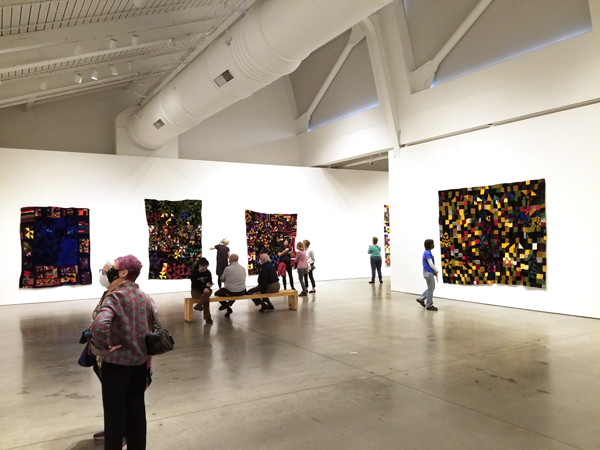The Rosie Lee Tompkins retrospective is ending this July 18 at the Berkeley Art Museum and Pacific Film Archive (BAMPFA), so you may need to stop reading this post and hop on over to Berkeley, California to catch this incredible exhibition. Now that the Pixeladies are venturing out a bit more, we have put museum visits at the top of our to-do list. Are we ever glad we went to see this one. Tompkins died in 2006, and many of her artworks are in the permanent collection at BAMPFA. This is Kris with some of our takeaways.
SIZE!
Many of Tompkins pieces in the exhibit are over 80″ x 80,” and BAMPFA’s main gallery is the perfect venue to showcase such large work. Standing back and soaking in several pieces together really allowed us to see the perceived randomness of Tompkins’ work. By the end of the day, we had decided to almost double the size of our next piece! Here is Deb measuring one of Tomkins’ largest pieces.
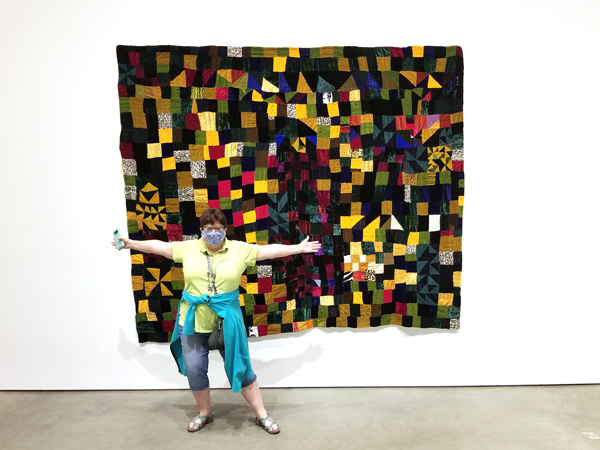
Texture!
Tompkins loved velvet, and the texture and reflective qualities in the fabric stopped us in our tracks. We kept remarking on how the velvet gave many of the pieces an emotional mood, as if there were more to understand behind the grid-like patterns. Deb really loved what we called the “blue velvet” piece. She tried hard to photograph that intense, yet variable blue center, made all the more richer because of the way Tompkins had changed the orientation of the velvet and how she mixed different blues together. But, Deb was disappointed in the photos. This is one of the cases where you just have to see it for yourself.
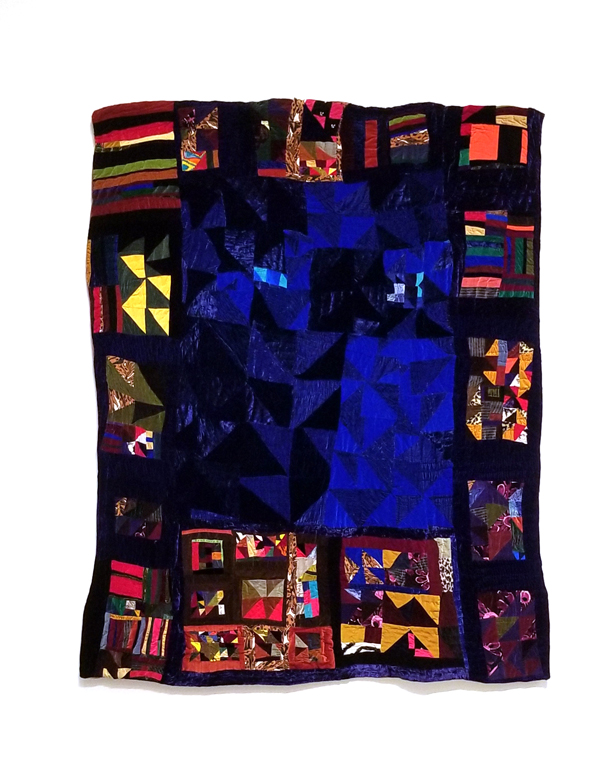
I really loved the “green flag.” To me the piece resembled a flag using colors from a traditional African palette. I saw independence, hinted at by the movement in the pinwheel pieces. I’m sure I read too much into this piece, but I kept coming back to look at it some more. You just can’t see the richness of the velvet in this photograph.
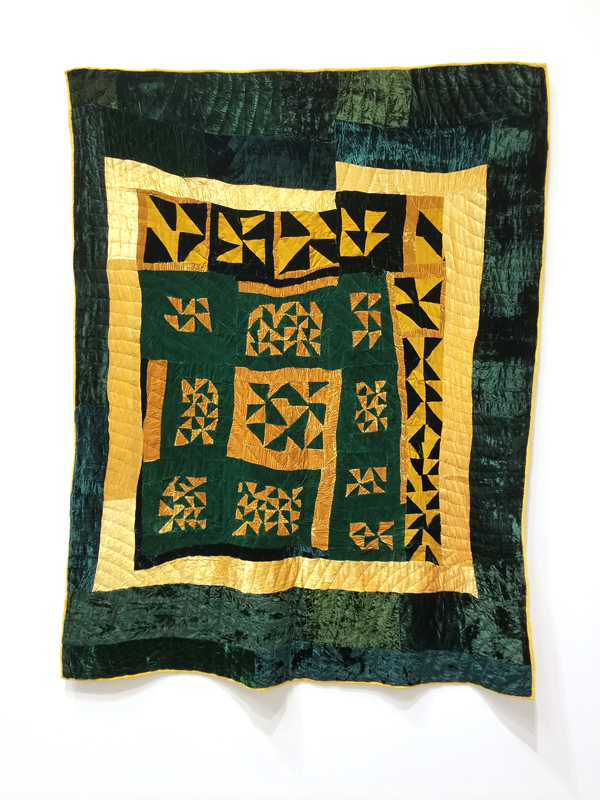
A Rose by Any Other Name . . .
Tompkins did not name most of her quilts. It must drive museum archivists nuts to have to revert to the acquisition number to identify any of her pieces. Maybe they have developed some nicknames over time. We certainly did in just an hour of viewing the pieces. So, do you name your quilts? We do. We spend a lot of time naming our quilts. It’s the one thing outside of the piece itself that we can imbue with meaning so we take advantage of that. Just consider this one piece that Tompkins did name. Do you view the piece differently, knowing the title is “String” (1985)?
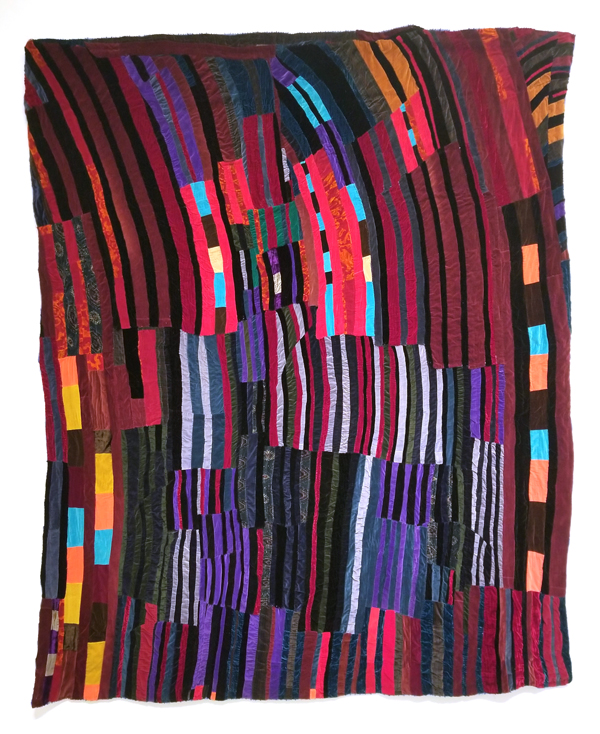
We still love Text
We always have to have a little chat when we see text as part of a visual artwork. Tompkins did not disappoint. This untitled piece from 2002 almost begs the viewer to zoom in on an individual letter to see how Tompkins appears to sew Xs into the fabric but at a wide enough stance so as to create the puckering you see in the overall piece.
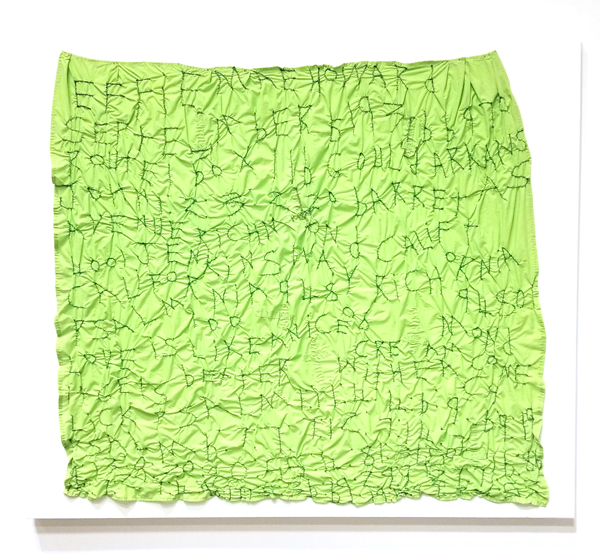
Yes, we did have a difficult time trying to decipher the text, but that was half the fun. After I got home and saw this closeup of the word “California,” I realized that I should have focused on “ice cream” instead. That would have been a little closer to the Pixeladies’ sensibilities.*
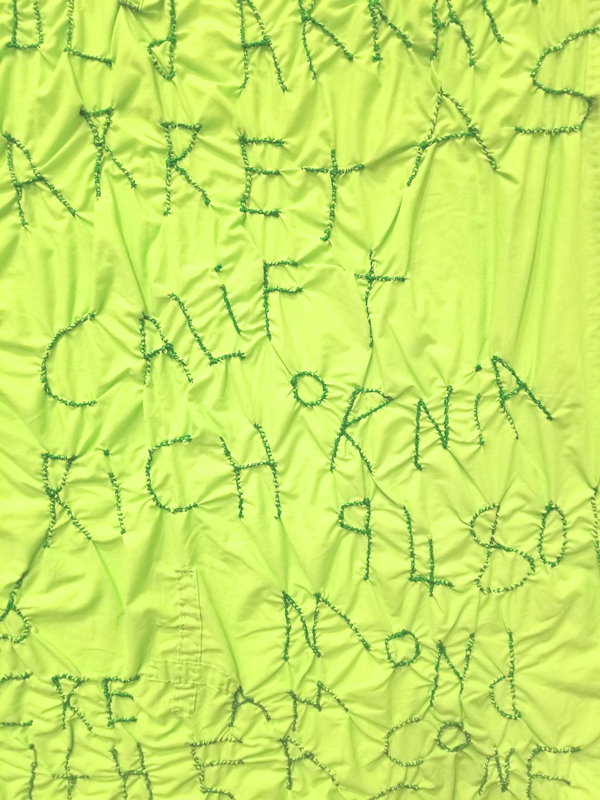
Got Patron?
Tompkins certainly did. Eli Leon was an avid collector of and advocate for African American quilts, and it is part of his extensive collection that we saw at the museum. Upon his death, Leon donated almost 3,000 quilts, over 500 from Tompkins alone, to BAMPFA. How grateful we are for Leon’s vision and BAMPFA’s recognition of this significant artist. So when’s our next museum field trip? Not sure, but we hear BAMPFA will be showcasing Leon’s broader collection in a show in 2022. We’ll be there. Wanna join us?
*A little note from Deb: Yes, the subliminal message in Tomkins’ quilt worked. We did have ice cream after seeing the show, but we forgot to take the requisite selfie of us with our cones.
